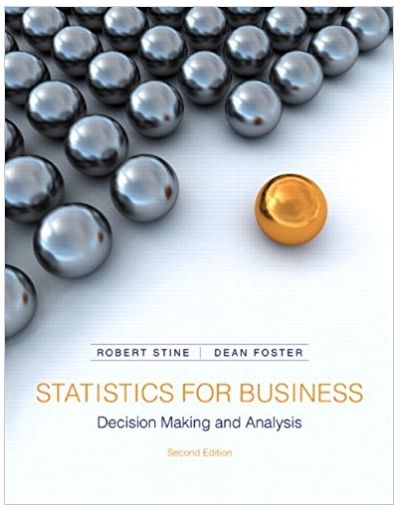Regression models that describe macroeconomic properties in the United States often have to deal with large amounts
Question:
.png)
(a) This plot shows timeplots of the two series. Do you think that they are correlated? Estimate the correlation.
(b) If the variables are expressed on a log scale, will the transformation to logs increase, de-crease, or not affect the correlation between these series?
(c) If both variables are used as explanatory variables in a multiple regression, will you be able to separate the two?
(d) You€™re trying to build a model to predict how changes in the macro economy will affect consumer demand. You€™ve got sales of your firm over time as the response. Suggest an approach to using the information in both of these series in a multiple regression that avoids some of the effects of collinearity.
Step by Step Answer:

Statistics For Business Decision Making And Analysis
ISBN: 9780321890269
2nd Edition
Authors: Robert Stine, Dean Foster





